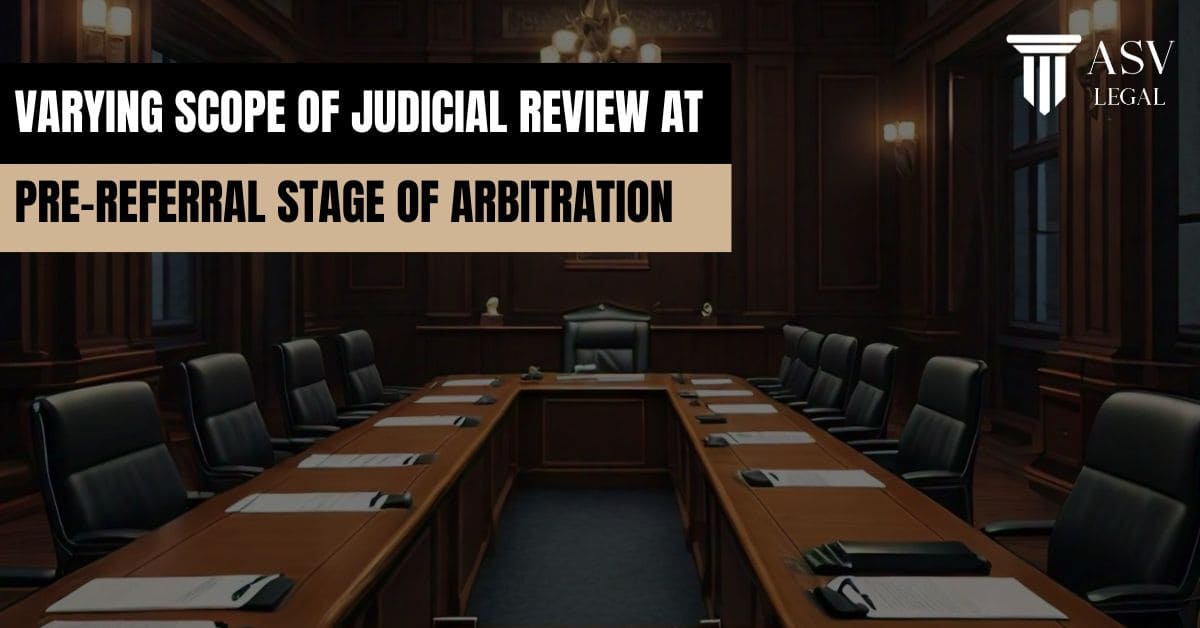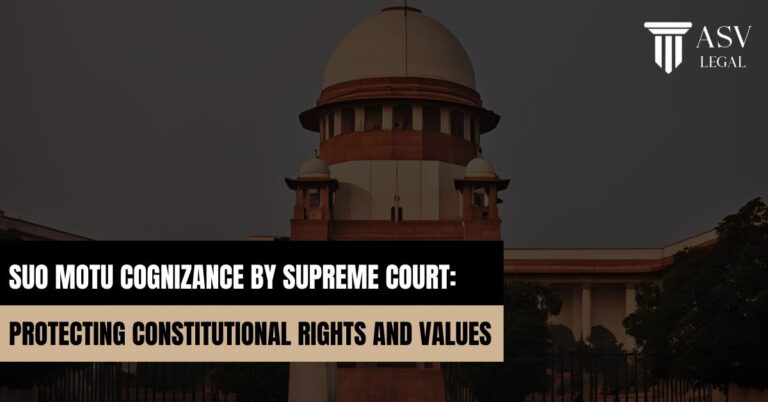Written By: Abhiraj Das
Extensive review by the court diminishes the very purpose of the arbitration and can create hinderance in the way of India becoming a hub of arbitration.
Introduction
Hon’ble Chief Justice of India while delivering a lecture recently at the UK Supreme Court claims that future of arbitration is already here and that regime of judicial interference has been replaced with one that supports arbitration.[1] Interestingly, when it comes to referring disputes to arbitration under Section 8 of the Arbitration & Conciliation Act, 1996 (hereinafter “the Act”) or appointing arbitrators under Section 11 of the Act, courts in India have been rendering judgements which enlarge the scope of judicial review.
Review of The Judicial Review
In the landmark case of Vidya Drolia,[2] Supreme Court ruled that the court has to undertake only a “prima facie review” at the referral stage and is extremely restricted. Supreme Court in NTPC v. SPML[3] gave the “eye of the needle” approach which entails a two-fold test:
(a) The primary inquiry is related to the existence and validity of arbitration agreement, which also includes ‘thorough’ examination as to the parties to the agreement and the applicant’s privity to the said agreement.
(b) The secondary inquiry pertains to arbitrability and entails a prima facie review of the facts including an examination of the ‘bona fides’ of the assertion on arbitrability.
Herein, the Apex Court declined to refer for arbitration, concluding that allegations of coercion raised by SPML was an ‘afterthought’ and lacked bona fide. The examination of bona fides of claims go beyond the principle declared in Vidya Drolia. The ‘eye of the needle’ test, though propounds limited scrutiny, in practice it would play out as antithesis to the efficacy of arbitration.
Moreover, Magic Eye case,[4] held that the existence and validity of agreement must be decided ‘conclusively’ by the court itself. Such extensive examinations and conclusive determinations deviate from the pro-arbitration position that court is required to only take a prima facie view. Widening the scope of pre-referral review reduces the efficacy of the arbitration process.
Surprisingly, Viswanathan Committee Report 2024[5] while dealing with the efficiency of arbitration did not consider this aspect.
Recently, Supreme Court has delivered an important ruling in SBI General Insurance v. Krish Spinning[6] recognising the underlying principle behind arbitral autonomy and judicial non-interference. It observed that legislative-mandate of prima facie determination at pre-referral stage requires that the courts do not end up venturing into the exclusive domain of the tribunal.
Apex Court referred to the term ‘examination’ under Section 11(6-A)[7] stating that it is limited to a prima facie scrutiny of the existence of the arbitration agreement, and does not include a laborious enquiry. It further holds that the prima facie view on existence of the arbitration agreement taken by the referral court does not bind either the tribunal or the court enforcing the arbitral award and that they can form their own independent opinion.
SBI v. Krish takes note of the observation made in In Re: Interplay[8] that at the stage of appointment of arbitrator it shall examine the existence of a prima facie arbitration agreement and not any other issues. It clarifies that by referring disputes to arbitration, the court is upholding the arbitral autonomy and that it does not fore go the scope of judicial review.
Cross-jurisdictional comparison is made by the court with respect to “second look” doctrine while referring to the US Supreme Court decision in PacifiCare Health Systems, Inc. v. Book,[9]wherein it was held that the question of non-arbitrability should be considered in the first instance by the arbitral tribunal. It also cites Dillon v. BMO Harris Bank, NA[10]opining that arbitrability should be submitted first to arbitration, with the possibility of subsequent judicial review in recognition and enforcement proceedings.
Supreme Court rightly concludes that tests like the “eye of the needle” and “ex-facie meritless”, although try to minimise the extent of judicial interference, yet they require the court to examine contested facts and therefore do not conform with the principles of modern arbitration which place arbitral autonomy and judicial non-interference on the highest pedestal.
With regards to the examination of bona fide at pre-referral stage, it held that ex-facie frivolity and dishonesty in litigation is an aspect which the arbitral tribunal is equally capable to decide as the tribunal has the advantage of perusing the relevant evidence in a more detailed manner than the referral court which is only required to take a prima facie view.
Conclusion
This judgement is a positive sign, although courts have the tendency to revert to earlier position, as it recognises that pre-referral is not the stage for the court to enter into a mini-trial or extensive review so as to usurp the jurisdiction of the arbitral tribunal but to affirm and uphold integrity and efficiency of arbitration as an alternative dispute resolution mechanism.
[1] Bhumika Indulia, “Future of arbitration is already here”: CJI Dr. DY Chandrachud at UK Supreme Court, 07 June 2024, SCC Times, https://www.scconline.com/blog/post/2024/06/07/future-arbitration-already-here-cji-dr-dy-chandrachud-uk-supreme-court/
[2] Vidya Drolia v. Durga Trading Corporation, (2021) 2 SCC 1
[3] NTPC Ltd. v. SPML Infra Ltd., 2023 SCC OnLine SC 389
[4] Magic Eye Developers Pvt. Ltd. v. Green Edge Infrastructure Pvt. Ltd. & Ors. Etc., 2023 SCC OnLine SC 620
[5] Dr. T. K. Viswanathan, Report of the Expert Committee to Examine the Working of the Arbitration Law and Recommend Reforms in the Arbitration and Conciliation Act 1996 to make it alternative in the letter and spirit, 2024
[6] SBI General Insurance v. Krish Spinning, 2024 INSC 532
[7] Section 11(6-A) was omitted by the 2019 amendment to the Act, 1996. However, since the omission has not been notified Supreme Court has given effect to the provision.
[8] In Re: Interplay Between Arbitration Agreements under the Arbitration and Conciliation Act 1966 and the Indian Stamp Act 1899, 2023 INSC 1066
[9] PacifiCare Health Systems, Inc. v. Book, 538, U.S. 401 (U.S. S. Ct. 2003)
[10] Dillon v. BMO Harris Bank, NA, 856 F.3d 330, 333 (4th Cir. 2017)



